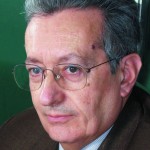Pneumatics or electro-mechanics? Very often, we hear this question asked by engineers who must choose the most suitable components for satisfying the requirements of a new system. The answer is sometimes given in absence of real technical reasons: “We have always done in that way”; “It is a system that we already know”; “We have never had any problem”, and so on.
Actually, it is not easy to make a correct choice, because it is necessary to take several factors, technical and not strictly technical, into account, sometimes in competition or in contrast one another. Performances, reliability, durability in time without or with reduced maintenance, compatibility with other system components, controllability and interfacing with control electronics, easy provisioning of a substitutive component in case of necessary replacement owing to failure, purchase cost and, not always duly considered factor, management cost.
The latter element, which does not affect the purchase cost of a system directly, often stays in the shade because it is strictly entrusted to the system user, who often is not the same person of the purchase service, who has the task of buying suitable components and devices for the implementation of effective appliances, limiting the purchasing cost. Well, this factor not adequately highlighted is very important for the manufacturing system.
To achieve a good management, it is necessary to bear clear in mind how costs are generated and how it is possible to reduce them. In the electric case, costs are directly given by the cost of the electric power absorbed by motors. In the pneumatic case, the cost is represented by the consumption of the compressed air that is generated but here the matter immediately becomes more complex because the compressed air is not purchased from an external net, as it happens for the electric current, but it is produced by the same subject that afterwards uses it.
The compressed air system in its whole is a complete system, which must be considered from the production to the use of the compressed air, and then the target of spending little is satisfied if we consume a small quantity of compressed air. Therefore, keeping performances unchanged, it is necessary to reduce the compressed air used and, if possible, to try to produce it at low cost.
An effective management starts from the choice of the maximum pressure level of compressors’ operation. It is important that such pressure is as low as possible, since the required energy and related costs grow exponentially with the compressor’s working pressure. If there are small high-pressure utilities, it is advisable to separate their management from the production of compressed air for general purposes, using pressure multipliers or separate generations.
Another essential point is the compression heat recovery: hot water production, fuel gas heating, use of heat pumps are all means for the energy recovery that can almost set to zero the cost of the compressed air production. In big plants, this is very interesting and can lead to significant choices in favour of pneumatics.
The good management of the compressed air, with efficient and well-monitored lines, avoids then useless losses, both in terms of pressure drops and of compressed air leaks. Today, users’ awareness of this point is growing and the availability of specialized companies offers an additional possibility to users.
Finally, engineers’ attention should focus on pneumatic circuits. Nowadays, the awareness about that is not diffused, yet, and the energy aspect is often deemed secondary. Nevertheless, there are suitable instruments, components and devices for attaining good energy savings; we should be only willing and curious of facing a design paying attention to important aspects for a good management.




